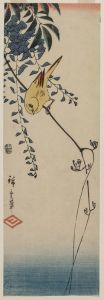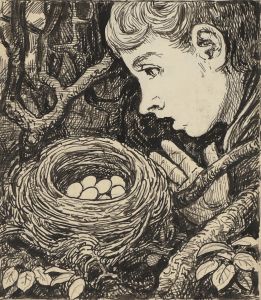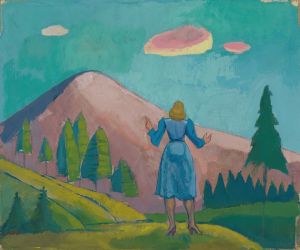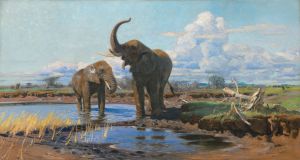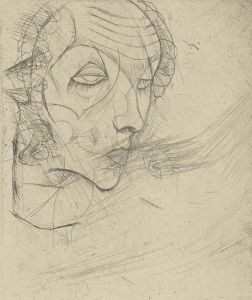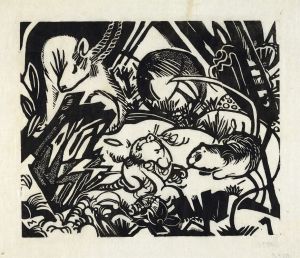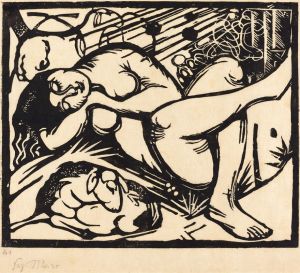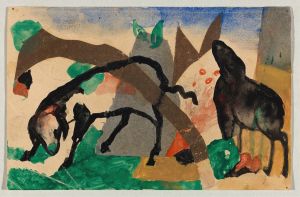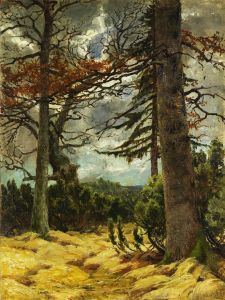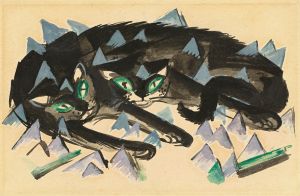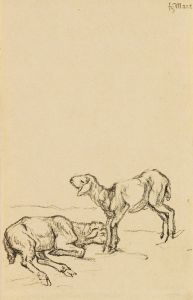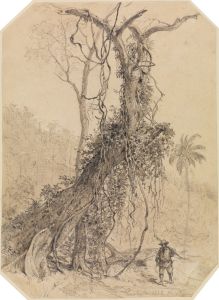
Tiger
A hand-painted replica of Franz Marc’s masterpiece Tiger, meticulously crafted by professional artists to capture the true essence of the original. Each piece is created with museum-quality canvas and rare mineral pigments, carefully painted by experienced artists with delicate brushstrokes and rich, layered colors to perfectly recreate the texture of the original artwork. Unlike machine-printed reproductions, this hand-painted version brings the painting to life, infused with the artist’s emotions and skill in every stroke. Whether for personal collection or home decoration, it instantly elevates the artistic atmosphere of any space.
"Tiger" is a painting created by the German artist Franz Marc in 1912. Marc was a key figure in the German Expressionist movement and a founding member of the art group Der Blaue Reiter (The Blue Rider), which aimed to express spiritual truths through art. His works are known for their vibrant colors and depictions of animals, which he believed were purer and more beautiful than humans.
The painting "Tiger" is an excellent example of Marc's unique style and his fascination with the natural world. The artwork features a tiger, rendered in a dynamic and somewhat abstract manner. The tiger is depicted in a crouching position, ready to pounce, which conveys a sense of energy and tension. Marc uses bold, contrasting colors to highlight the tiger's form and the surrounding environment. The use of bright yellows, oranges, and blues creates a striking visual impact and emphasizes the animal's power and vitality.
Marc's choice of colors and his approach to form were influenced by his interest in color theory and the emotional and symbolic meanings of colors. He believed that colors could evoke specific feelings and moods, and he used them deliberately to convey the essence of the subjects he painted. In "Tiger," the vibrant hues and dynamic composition reflect Marc's desire to capture the spirit and energy of the animal.
Franz Marc's work, including "Tiger," was part of a broader movement in early 20th-century art that sought to break away from traditional representations and explore new ways of seeing and interpreting the world. The Expressionists, including Marc, were interested in expressing inner emotions and experiences rather than depicting the external world in a realistic manner. This approach is evident in "Tiger," where the stylized form and vivid colors create a sense of the animal's inner life and vitality.
"Tiger" is housed in the collection of the Städtische Galerie im Lenbachhaus in Munich, Germany. The Lenbachhaus is renowned for its extensive collection of works by members of Der Blaue Reiter, and Marc's paintings are among the highlights of the museum's holdings. The painting remains a significant example of Marc's contribution to modern art and his innovative approach to depicting the natural world.
Franz Marc's career was tragically cut short when he was killed in action during World War I in 1916. Despite his relatively brief career, his work has had a lasting impact on the art world, and he is remembered as one of the leading figures of German Expressionism. "Tiger" continues to be celebrated for its bold use of color, dynamic composition, and the way it captures the essence of the animal it portrays.





